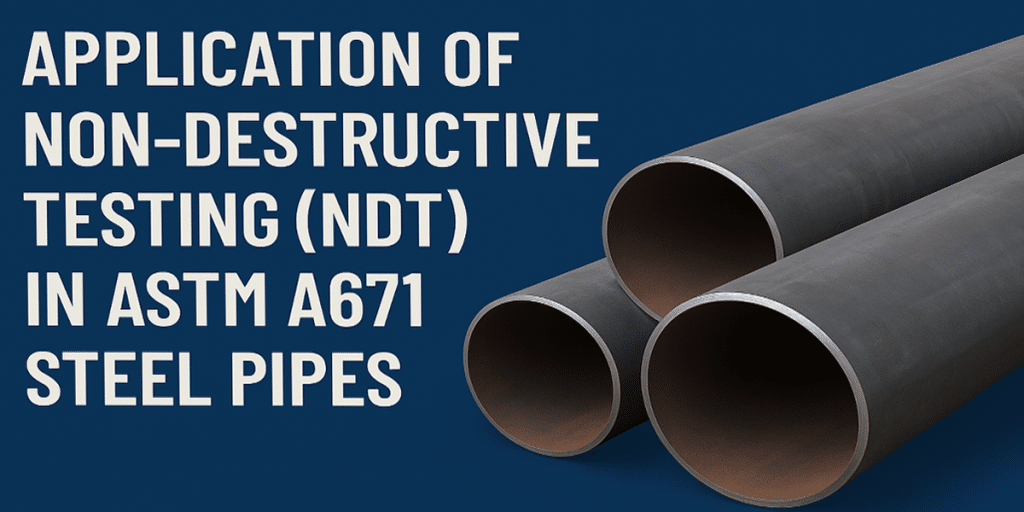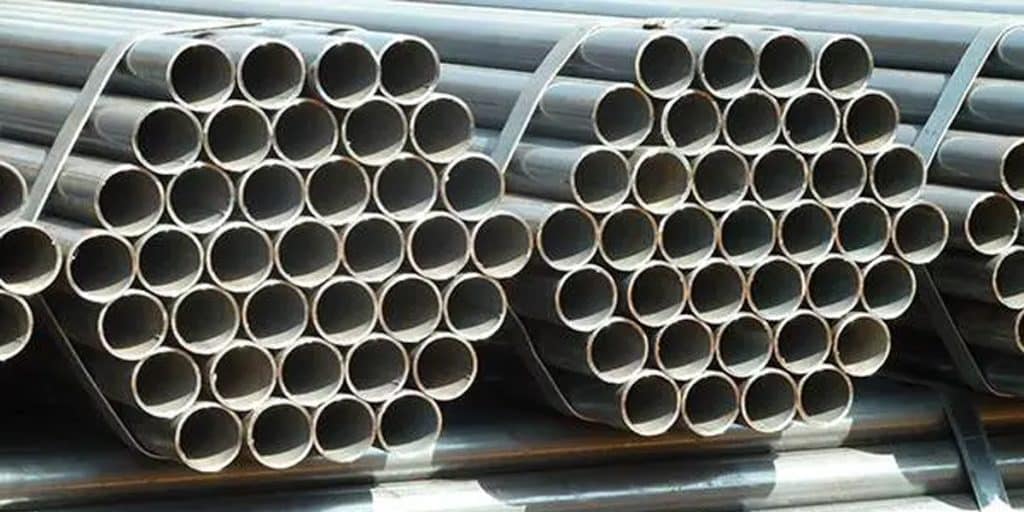- 1. What is ASTM A53? (Standard Scope and Applications)
- 2. Chemical Composition (Grade A vs. Grade B)
- 3. Mechanical Properties (Unit: psi / MPa)
- 4. Key Manufacturing and Inspection Requirements (Closely Related to Material Selection)
- 5. Typical Applications and Material Selection Recommendations
- 6. Typical Applications
- 7. Material Selection Tips
- 8. Specifications, Ends, and Delivery (Engineering-Critical Details)
- 9. Why Choose LONGMA’s ASTM A53 Round Pipes?
ASTM A53 is a general-purpose carbon steel round pipe standard, covering manufacturing methods such as seamless (Type S) and Electric Resistance Welded (ERW, Type E). It is applicable to both black pipes and hot-dip galvanized pipes, with a size range of NPS 1/8–26. Grade B features high strength (tensile strength ≥ 415 MPa, yield strength ≥ 240 MPa), while Grade A offers better ductility. For material selection: prioritize Grade B for pressure-bearing or load-bearing needs; prioritize Grade A if processes like cold bending and coiling are required.
What is ASTM A53? (Standard Scope and Applications)
ASTM A53/A53M specifies seamless and welded steel pipes for mechanical and pressure applications. It allows delivery of either black pipes or hot-dip galvanized pipes, and the pipes are suitable for forming operations such as welding, coiling, bending, and flange connection. The standard covers common sizes from NPS 1/8 to NPS 26.
There are three manufacturing types: Type S (Seamless), Type E (ERW), and Type F (Continuous Furnace Welded). Among these, Type S and Type E are the most commonly used in engineering projects.
Chemical Composition (Grade A vs. Grade B)
The following table lists the maximum content requirements (%) for elements in ASTM A53. Note that the contents of Cu, Ni, Cr, Mo, and V are restricted individually, and their total content is also controlled.
| Type/Element | C | Mn | P | S | Cu | Ni | Cr | Mo | V |
| Type S/E – Grade A | ≤0.25 | ≤0.95 | ≤0.05 | ≤0.045 | ≤0.40 | ≤0.40 | ≤0.40 | ≤0.15 | ≤0.08 |
| Type S/E – Grade B | ≤0.30 | ≤1.20 | ≤0.05 | ≤0.045 | ≤0.40 | ≤0.40 | ≤0.40 | ≤0.15 | ≤0.08 |
| Type F – Grade A | ≤0.30 | ≤1.20 | ≤0.05 | ≤0.045 | ≤0.40 | ≤0.40 | ≤0.40 | ≤0.15 | ≤0.08 |
Key Point: Grade B generally allows higher contents of carbon (C) and manganese (Mn), resulting in higher strength; Grade A has a more “moderate” chemical composition, which is beneficial for cold working and forming.
Mechanical Properties (Unit: psi / MPa)
The following are the minimum mechanical property requirements specified in ASTM A53.
| Item | Grade A | Grade B |
| Tensile Strength (min) | 48,000 psi (330 MPa) | 60,000 psi (415 MPa) |
| Yield Strength (min) | 30,000 psi (205 MPa) | 35,000 psi (240 MPa) |
| Elongation | Calculated per ASTM A53/A370 formulas/tables (related to thickness and gauge length) | Same as Grade A |
Conclusion: Grade B has higher tensile and yield strength indicators than Grade A; if safety margin or pressure-bearing capacity is the top priority, Grade B is the first choice.
Key Manufacturing and Inspection Requirements (Closely Related to Material Selection)
-
- ERW Weld Heat Treatment: ERW welds of ASTM A53 Grade B must undergo heat treatment at ≥1000 °F (≈540 °C) after welding to eliminate untempered martensite and improve weld toughness and stability.
- Hydrostatic Test: The standard requires each pipe to undergo a hydrostatic test (with a holding time of no less than 5 seconds); corresponding stress/pressure formulas are specified for large-diameter pipes.
- Mechanical Tests: Based on pipe size and type, tests such as tensile, bending/flattening tests are conducted (e.g., flattening tests are commonly used for pipes with NPS ≥ 2; transverse tensile tests are required for ERW pipes with NPS ≥ 8). These tests ensure that the comprehensive performance of welds and base metal meets application requirements.
Typical Applications and Material Selection Recommendations
-
Typical Applications
- Grade A (Better Ductility): Water supply and drainage systems, general mechanical pipes, and scenarios requiring extensive cold working (coiling, flaring, cold bending).
- Grade B (Superior Strength and Pressure-Bearing Capacity): Transmission of steam/gas/oil, main fire-fighting pipe networks, structural support, and mechanical/electrical installation.
-
Material Selection Tips
-
- Prioritize Grade Bfor pressure-bearing/strength-focused applications;
- Prioritize Grade Afor cold bending/coiling/forming-focused applications;
- For surface protection: Choose between black pipes or hot-dip galvanized pipes based on environmental corrosion conditions and construction methods.
Specifications, Ends, and Delivery (Engineering-Critical Details)
- Size and Wall Thickness: Covers common standard/extra-strong grades (STD/XS/XXS, Sch 10–160); the negative tolerance of wall thickness generally does not exceed 12.5%.
- Pipe Ends: Available in plain ends, beveled ends, threaded ends, and ends with couplings.
- Length: Single/double random lengths are optional; random lengths have requirements for minimum and average lengths.
These details can be confirmed with our technical team when placing an order to ensure on-site alignment and construction efficiency.
Why Choose LONGMA’s ASTM A53 Round Pipes?
As a manufacturer with over 20 years of industry experience, LONGMA specializes in ERW round pipes and provides Longitudinal Submerged Arc Welded (LSAW) round pipe solutions for large-scale projects (in compliance with project standards such as API 5L and EN 10219). Our understanding of ASTM A53 goes beyond standard clauses and is reflected in the quality details of every single steel pipe.
- Stable ASTM A53 Supply Capacity: We maintain regular inventory of ASTM A53 Grade B (ERW) black pipes/galvanized pipes, covering a wide range of sizes with controllable delivery times.
- Controlled Weld Quality: ERW post-weld heat treatment, online/offline non-destructive testing (NDT), and metallographic sampling inspections ensure consistency between weld structure and base metal.
- Strict Testing and Traceability: Full-process records of hydrostatic, tensile, flattening/bending, and chemical analysis tests are kept, and Material Test Certificates (MTC) are provided with each order.
- Engineering-Oriented Delivery: Customizable beveling, marking, galvanizing, coating, and packaging solutions are available to reduce on-site secondary processing.
- Technical Support: We assist with grade selection/wall thickness calculation, welding process recommendations, and anti-corrosion solution evaluation to ensure one-time acceptance.
Contact LONGMA’s technical consultants now to obtain the ASTM A53 selection chart and quotation, and gain advantages in cost, delivery time, and quality for your project!
Note: The data in this article is compiled based on the ASTM A53/A53M specification and specification summaries from authoritative material suppliers; the specific implementation shall be subject to the project technical documents and the latest standard provisions.



